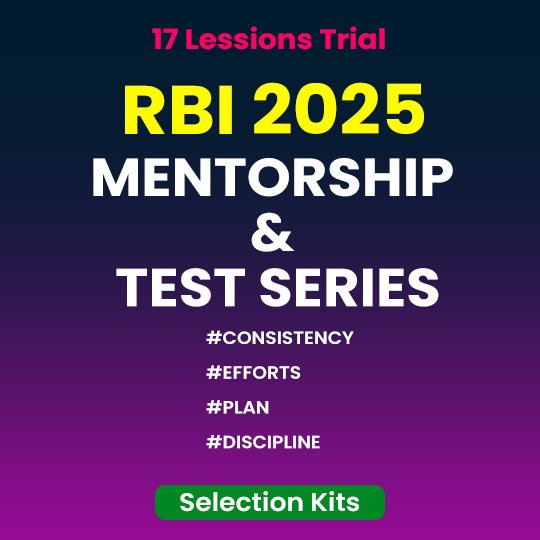Daily Current Affairs Quiz
3 February, 2025
International Affairs
1. Trump Announces New Tariffs on Canada, Mexico and China
Context:
U.S. President Donald Trump’s sweeping tariffs 25% on imports from Canada and Mexico, and an additional 10% on goods from China are set to roil supply chains for products ranging from automobiles to avocados with industries girding for cost increases.
Key Highlights:
- Canadian and Mexican products to the United States will bear a 25% tariff rate.
- Additional 10% tariff on exports of energy produced in Canada to the U.S.
- Also, a fresh 10% tariff on the goods from China.
- Removing Duty-Free Exemptions
- Low-value imports from Canada, Mexico, and China will no longer be exempt.
- Legal Justification
- Trump invoked the International Emergency Economic Powers Act.
- Cited illegal immigration and drug trafficking (including fentanyl) as a “national emergency.”
Reactions & Retaliation
- China
- Commerce Ministry announced countermeasures.
- Threatens to lodge a complaint with the World Trade Organization (WTO).
- Mexico
- President Claudia Sheinbaum ordered her Economy Minister to impose retaliatory tariffs.
- Canada
- Prime Minister Justin Trudeau said he would impose a 25% tariff on U.S. goods worth Can$155 billion (US$106.6 billion).
Trump’s Rationale
- Accepted possible economic hardship but maintained it was “worth the price.”
- Stated that, it must happen to ensure America’s interests are safe and prevent drugs coming through across the borders.
National Affairs
1. AI in Genomics
Genomics
Genomics is a scientific field that studies the structure, function, and sequence of an organism’s genome. It uses DNA sequencing, bioinformatics, and other tools to understand how genes interact and how an organism’s genome relates to its phenotype.
The Emergence of AI-Based Genomics
- Accelerated Gene Analysis
- The processing of gene data by AI has speeded up to facilitate more comprehensive studies.
- Breakthrough in Cancer Studies
- In March 2024, researchers at John Hopkins University discovered that long-known genetic sequences are associated with cancer.
- Machine learning analyzed over 1,200+ “junk DNA” elements which opened new doors for potential therapies, diagnostics, and even screening for cancer.
- AI in Genetic Healthcare
- Gene Box, a healthcare startup, is applying AI in analyzing genetic predispositions, gene-environment interactions, and personalized recommendations.
- Continuous updates ensure findings are aligned with the latest scientific research.
Challenges and Limitations
- Genetic Predictions are Not Infallible
- Factors such as intelligence, success, or personality cannot be solely predetermined based on genetics.
- Genetics influences only about 30% of characteristics, while environmental and lifestyle factors dominate the other parts.
- Unreliable Diagnosis
- Many genetic discoveries are labeled as “of unknown significance”, which may necessitate further family testing.
- Example: Alzheimer’s genes—having risky genes does not mean guaranteed disease, one can develop Alzheimer’s even without those associated genes.
- Ethical Concerns in Mental Health Genomics
- AI-driven predictions of genes for conditions such as depression or heart diseases require tougher guidelines to prevent misuse or even misinterpretation.
Data Privacy Concerns with Genetic Testing
- Boom in AI-Genomics Startups
- Nucleus, a startup backed by investors like Peter Thiel and Alexis Ohanian, aims to make genetic analysis mainstream.
- Its founder envisions a future where “everyone has their entire genome on their iPhone,” raising data security risks.
- Data Breach
- In October 2023, a massive cyberattack exposed personal genetic data of 6.9 million users.
- The company faced fines of $30 million and lost most of its board and workforce.
- Users are forced to find it very difficult to withdraw the genetic data, especially those who had opted into research programs.
- Lack of HIPAA protections leaves consumer genetic data open for exploitation.
2. Grameen Credit Score Framework
Context:
The FY26 Budget proposed introducing a Grameen Credit Score framework for assisting 100 million rural Self help Groups (SHG) members access credit at an individual level. Through SHG repayment records, the public sector banks will allocate a credit score for individual members thereby enhancing the country’s financial inclusion.
Key Highlights:
The Grameen Credit Score Framework
- The existing regulations were not able to let banks advance loans to members of an SHG on the strength of the performance of the group.
- Now, a strong repayment record of an SHG is acceptable by the new guidelines as an argument to offer credit scores to its members.
- It would enable a higher degree of rural and semi-urban access while trying to keep bad loan losses in control.
Expert Recommendations and Policy Changes
- Two expert groups from the finance and rural development ministries proposed the idea in FY25.
- Banking regulations will be updated to facilitate individual borrowing based on SHG performance.
- SHG members with good group credit history will have better access to loans from formal banks.
Economic Impact and Implementation
- It is going to promote mass access to credit in rural areas.
- This facility will empower members of a SHG to apply individually for loans on the strength of the credit rating of their own SHG.
- The rural development ministry has partnered with:
- The Government e-Marketplace (GeM) to spur the sale of products by the SHG.
- E-commerce platforms including Flipkart, Amazon, Meesho can be availed to expand SHG artisans weavers, craftsman’s reach into the marketplace.
Economy
1. Union Budget 2025-26: A Middle-Class Dilemma
Key Highlights:
- Try to Achieve Three Competing Objectives
- The Budget attempts to lower taxes, lower the fiscal deficit, and stimulate growth—three objectives that normally cannot go together.
- Capex Continues on Its Upward Trajectory
- Capex has grown from ₹3 trillion in 2019 to more than ₹11 trillion in 2024.
- The Budget bases its optimism on the hope that growth will no longer depend on expansion in capex, but driven by middle-class demand.
- Middle-Class Demand Revival Focus
- The middle-class consumer will, according to the government, now drive the economy. The only problem with that is no one knows where India’s definition of the “middle class” fits.
Middle-Class Definition
- 280-326 million registered vehicles in India suggest a large middle class.
- PM Modi’s “neo-middle class” estimate: 250 million people.
- 60% of India (800 million people) receives free food grains, meaning the middle class cannot exceed 600 million.
- Taxpayers vs. Middle Class
- 75 million tax returns filed in 2023, while 47 million paid no taxes. That is, only 27 million contribute, and these are the smallest fractions of the population.
- Can the richest 30 million people be called a “middle class” in a 1.4 billion population?
Impact of Cuts on Growth: How Effective?
- Justifications for Tax Relief
- Tax cuts are justified if they alleviate overburdened taxpayers’ cost burden, simplify the tax system, or broaden the tax base.
- However, they are unpredictable as a growth-stimulating tool.
- Historical Evidence Against Tax Cuts as Growth Drivers
- 2019 corporate tax cut (₹1.85 trillion loss in revenue) to increase investments.
- Outcome
- Only 0.1% of companies invested new, indicating very weak economic effects.
- Long-term US studies also have little association between tax cuts and long-run growth.
2. Government’s Economic Agenda in Budget 2025-26
Context:
- India’s 2025 Budget signals a transformative shift towards growth and stability amid a volatile global economic environment.
- The focus is on regulatory simplification, business-friendly reforms, and enhancing global competitiveness.
Key Pillars of the Budget
Regulatory Reforms
- Trust-based compliance framework displaces the rigid, prescriptive regulations.
- Focus on reducing red tape and a pro-business environment.
- Main steps would involve
- A high-level committee for regulatory reforms to tackle the License Raj.
- The Financial Stability and Development Council (FSDC) to study existing regulations and reviews of impact assessments.
- Jan Vishwas Bill 2.0 to encourage voluntary compliance and curtail excessive enforcement.
Inward and Outward Investment
- India is both a capital importer (up 26% in FDI) and an exporter (up 17% in Outward FDI).
- Renewed Bilateral Investment Treaty (BIT) for both inward and outward investors facing challenges.
- Increase the FDI cap in insurance to 74% percent to 100 percent to promote investment and increase the low penetration of insurance.
Challenges and Implementation Concerns
Implementation Risks
- The reforms outlined require effective execution, but lack concrete roadmaps and timelines.
- Agencies like the FSDC and regulatory reform committees need clear mandates and structures to avoid bureaucratic delays.
- Without accountability and scoping, the reforms risk becoming perfunctory rather than transformative.
Foreign Direct Investment (FDI) and Insurance Reforms
- Sector reform in insurance would attract investment to increase coverage and financial inclusion. Increased FDI limits are going to increase the coverage, bringing the country closer to the objective of “Insurance for All” by 2047.
Tax Reforms and Corporate Mergers
- Tax framework reforms indicate a change in the system to be a trust-first, scrutinize-later approach, hence creating a business-friendly environment.
- Income tax reforms seek to enhance disposable income, which can lead to a boost in demand in the economy.
- Corporate merger fast-tracking is another major reform however, with no clear operational timelines.
3. India’s Electronics Manufacturing Sector
Context:
The 2025 Budget has introduced a new presumptive tax regime with an aim to attract foreign nationals to work in India’s electronics manufacturing sector. This will further the growth prospect in sectors such as semiconductors and electronics, which will grow massively and require skilled talent from across the world.
Key Highlights:
Proposed presumptive tax regime
- Govt has made a proposal stating that only 25% of the total remuneration received by non- residents working for electronics manufacturing enterprises will go into the ambit of taxable profit.
- This might lead to much lower tax on such income where the effective rate may be just less than 10% only for foreign national.
- This will attract global talent in semiconductor and electronics sectors, helping them access top-tier skills and technology.
Safe Harbour Provision
- A safe harbour provision will be introduced for non-residents who store components intended for electronics manufacturing in India.
- This measure is intended to strengthen warehousing facilities for semiconductor and electronics products, as in other countries such as Malaysia, Taiwan, Japan, and South Korea.
- It is intended to simplify procedures and minimize tax disputes, thus providing more compliance and certainty for non-residents.
Electronics Manufacturing Expansion
- India’s electronics manufacturing sector is expected to double to over $200 billion in the next three to four years, driven by the new Budget proposals.
- The reforms are set to attract large-volume electronics manufacturing to India.
Employment Opportunities
- Employment in the sector, currently at 2.5 million, is projected to quadruple over the next four years, providing significant job opportunities.
Specific Sectoral Measures –
- Customs duty cuts for key materials – lithium battery scrap and raw materials for mobile phone batteries-will be sought to be utilized to spur manufacturing in these sectors.
- The India AI mission has been allocated ₹2,000 crores, where the money would be used in setting up the AI labs and data curation units across India.
- The scheme for out sourced assembly and testing units has been increased to ₹3,900 crore; the scheme for semiconductor fabrication units has seen an increase from ₹1,200 crore to ₹2,500 crore.
4. Budget Overview
Income-Tax Collection Growth
- Confidence in Growth
- The Government Targeted a 14.4% growth in income tax collection, outpacing the nominal GDP growth rate of 10.1%.
- Tax Buoyancy
- The government has projected a 12.5% growth in direct taxes, which will be led by efficient tax administration and voluntary compliance.
- Moderated Projections
- Growth has been moderated to 14.4% because it saw earlier surges of 19.7% in FY23, 25% in FY24, and is expected to be at 20% in FY25.
Effect of Tax Incentives on Inflation
- No Inflationary Worries
- The government does not worry about inflation by tax incentives; it argues that inflation is something related to scarce availability of goods and services, and these incentives will not change money supply dynamics.
- Stimulating Savings, Investment, and Consumption
- The tax proposals are likely to stimulate savings, investment, and consumption, which means a healthy economy without an increase in money supply.
Problems in Privatization of PSUs
- Gradual Disinvestment
- The plan of the government is to withdraw the whole stake by first listing PSUs and gradually lowering the stake of the government down to 51% through sales of the minority.
- Drawbacks
- The privatization process is hindered because buyers are not willing to accept companies with associated liabilities and assets of government enterprises, particularly when companies hold large tracts of land, such as Bharat Earth Movers in Bengaluru.
- This becomes a problem that allows for the separation of real estate and companies so that they become saleable to bidders.
- Slower Process
- The privatization process is also slower in the competition of other routes such as, NCLT or alternative funds.
Non-Tax Revenue and Oil Sector Concerns
- Confidence in Non-Tax Revenue
- The government is confident about meeting its non-tax revenue targets for the coming financial year.
- Profitability of Oil PSUs
- There are no major concerns about the profitability of oil PSUs despite the extant factors such as US policies. The oil prices are set to be stable and subdued, which would be a blessing for India.
Agriculture
1. Agriculture Budget 2025-26
Introduction
- While public focus was on middle-class tax relief, the Budget also introduced key agricultural reforms.
- Measures aim to increase productivity, enhance crop diversification, and improve credit access for farmers.
Key Highlights:
Prime Minister Dhan-Dhanya Krishi Yojana
- The Aspirational Districts Programme is an inspiration to this program.
- This focuses on the 100 low-productivity districts with a focus on increasing crop productivity, crop diversification, and access to both long- and short-term credit.
- This will help around 17 million farmers who belong to the poorer end of the income scale.
Six-Year Mission for Pulse Self-Sufficiency
- Targets tur (pigeon pea), masoor (lentil), and urad (black gram).
- Central agencies to procure farmers’ produce for four years, ensuring price stability.
- Aims to reduce dependence on wheat-paddy cycles, especially in Punjab and Haryana.
High-Yielding Seeds and Cotton Productivity Missions
- Focus on developing high-yield seeds to improve productivity.
- Cotton mission aims at enhancing cotton yield and quality to enhance farm incomes.
New Initiatives in Horticulture and Fisheries
- Fruit & Vegetable Programme to address the changing pattern of consumer preference.
- Makhana Board in Bihar to boost production and exports.
- Fisheries sector framework to promote sustainability and export opportunities.
Increasing the Loan Limit of Kisan Credit Card (KCC)
- Loan limit is *increased from ₹3 lakh to ₹5 lakh under the modified interest-subvention scheme. Nearly 77 million farmers benefit from KCC to access cheaper credit.
Rural Prosperity and Resilience Programme
- State partnerships for rural development via: Skill development Technology adoption.
Budget Distribution and Economic Output
- The Agriculture sector will account for a significant 22% increase up to ₹1.71 trillion.
- The economy will also find agriculture one among the four most significant engines driving economic growth.
- As Half of the work force depends upon agriculture productivity increase will, thereby, boost the rural income and enhance the overall consumer demand in the market.
- Affordable food prices
Challenges & Areas for Improvement
- Shifting the workforce out of agriculture remains a more supra policy challenge.
- Food inflation still worries RBI’s monetary policy.
- Weather-related risks threaten productivity. More investment in R&D is essential.
- Only a marginal increase in funding of agricultural research is a missed opportunity for long-term innovating.















